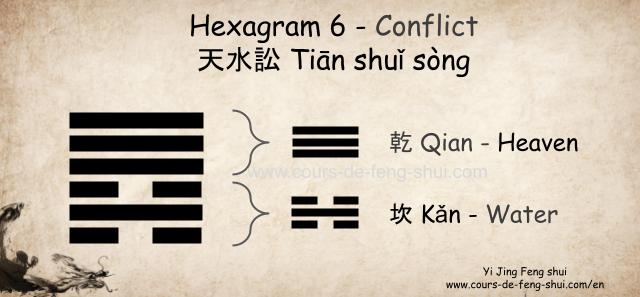
Hexagram 6 of the Yi Jing is composed of the upper trigram ☰ 乾 Qian (Heaven, the father) and the lower trigram ☵ 坎 Kan (Water, the younger).
Interpretation from comments: Conflict, a time when opposition is encountered and diplomacy must be used flexibly.
In Chinese: 天水訟 Tiān Shuǐ Sòng, the English translation is “Conflict.”
Jia Zi combination of the hexagram: Hexagram 6 of the I Ching is associated with the combination Xin Wei 辛未, the 8th combination of the sexagesimal cycle (hour, day, month, year):
- 辛 Xin, celestial stem, Metal Yin.
- 未 Wei, terrestrial branch of the Goat.
Interpretation of the drawing of hexagram 6 of the I Ching
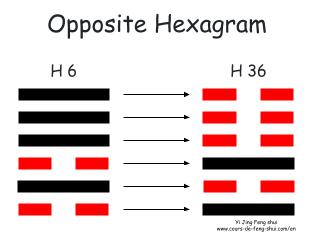
Opposite hexagram (錯卦 Cuo Gua): The opposite hexagram indicates everything that is not or the opposite of the solution to the situation.
The opposite hexagram is obtained by replacing Yang lines with Yin lines and vice versa, resulting in Hexagram 36 – Ming Yi (The Obscuration of Light).
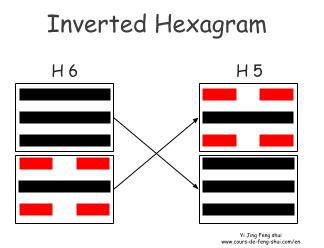
Inverted Hexagram (覆卦 Fu Gua): The permuted hexagram provides information on the origin of the situation.
The permuted hexagram is obtained by swapping the two trigrams, resulting in Hexagram 5 – Xu (Waiting).
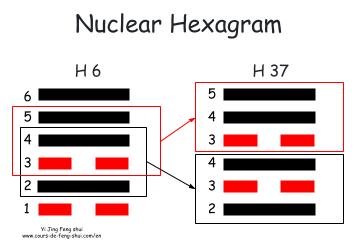
Nuclear Hexagram (互卦 Hu Gua): The nuclear hexagram represents the core of the problem or question.
The nuclear hexagram is obtained by using the four central lines to form two trigrams, resulting in Hexagram 37 – Jiā Rén (The Family).
Mutant Hexagram (derived): The mutation of a line results in a new hexagram, which indicates the evolution of the situation.
- Line 6 mutates: the resulting hexagram is H47.
- Line 5 mutates: the resulting hexagram is H64.
- Line 4 mutates: the resulting hexagram is H59.
- Line 3 mutates: the resulting hexagram is H44.
- Line 2 mutates: the resulting hexagram is H12.
- Line 1 mutates: the resulting hexagram is H10.
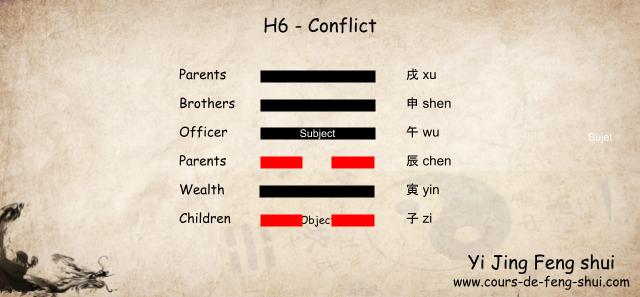
Taoist Yi Jing – Wen Wang Gua
Characteristics of hexagram 6 for the Taoist interpretation of the Yi Jing using the Wen Wang Gua (Liu yao) divination method:
Hexagram 6 is a wandering hexagram (of change) from the Li (Fire) family. In this hexagram, the Subject is placed on the fourth line, and the Object is placed on the first line.
The Six Relatives:
- 6th line: 戌 Xu (Earth) – Children
- 5th line: 申 Shen (Metal) – Wealth
- 4th line: 午 Wu (Fire) – Brothers
- 3rd line: 午 Wu (Fire) – Brothers
- 2nd line: 辰 Chen (Earth) – Children
- 1st line: 寅 Yin (Wood) – Parents